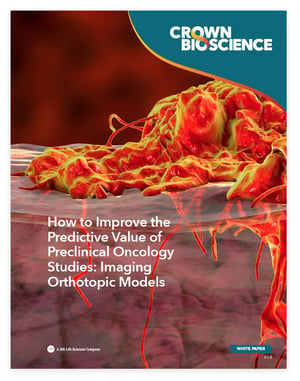- Services
- Therapeutic Areas
- Model Systems
- In Vitro
- In Vivo
- Technologies
- Service Type
- About Us
- Our Science
- Start Your Study Now

Standard oncology tumor models are implanted subcutaneously. However, there are growing concerns around subcutaneous models and their predictive value due to the lack of an organ-specific tumor microenvironment (TME). This is particularly important for I/O studies, as immunotherapy response is heavily dependent on the TME.
Orthotopic models provide a more predictive alternative, allowing establishment of a relevant organ-specific TME, as well as clinically-relevant tumor metastasis. To realize the full benefits of orthotopic metastatic modeling, disease needs to be tracked and monitored in real time, which is enabled by preclinical optical imaging.
This White Paper explores the main benefits of imaging orthotopic, metastatic models. Model key utilities are explored for studying disease progression and assessing novel agents and combinations for each stage of disease.
Your privacy is important to us.
We'll never share your information.
© 2024 Crown Bioscience. All Rights Reserved.


© 2024 Crown Bioscience. All Rights Reserved. Privacy Policy
2023-05-22
2019-05-08
landing_page
PDX/Databases